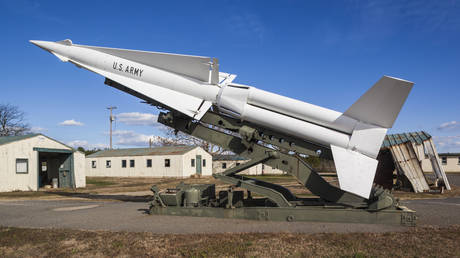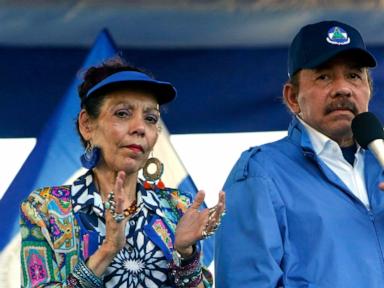ARTICLE AD BOX
Photographs by Elliot Ross
Just after 8 o’clock one spring morning, 2,000 feet below the rim of the Grand Canyon, Nate Chamberlain, wearing chaps and cowboy boots, emerged from the post office in Supai, Arizona, with the last of the morning mail. He tucked a Priority Mail envelope into a plastic U.S. Postal Service crate lashed to one of the six mules waiting outside. Then he climbed into the saddle on the lead mule, gave a kick of his spurs, and set off down the dirt road leading out of the village.
It was the beginning of what may be the country’s most unusual USPS route—the very last to deliver mail by mule. The mule train would travel eight miles along a creek lined with cottonwoods, through a narrow gorge, and up a switchbacking trail carved into the cliffside to reach a hitching post at the top of the canyon, where a sign reads US MAIL DELIVERY ZONE. There, Chamberlain would drop off the outgoing mail with a driver—who would take it another 68 miles to the next post office, in the town of Peach Springs—and pick up the incoming mail to deliver back to the village.
[Philip F. Rubio: Save the Postal Service]
Supai, the only village on the reservation of the Havasupai Tribe, is one of the most remote communities in the country. It is accessible only by foot, and by helicopter when the weather allows. The mule train, which makes the 16-mile, six-hour loop up and down the canyon five days a week, is perhaps the most extreme manifestation of the USPS mandate to “render postal services to all communities.” Mail delivery in Supai involves a feat of logistics, horsemanship, and carefully placed hooves. It is slow and drudging work—starting at 3 a.m., when Chamberlain rises to feed the pack string, and continuing to sundown as fences are fixed and horseshoes are replaced—that belies an era of instant delivery, optimized everything, and “government efficiency.” It also offers a glimpse into what the Postal Service can mean for rural America, at a moment when the agency’s future is uncertain.


For centuries, the Havasupai Tribe ranged across the southern rim of the Grand Canyon, hunting and foraging along the plateau in the fall and winter, and descending into the canyon in the spring and summer to grow corn, beans, melons, and sunflowers along Havasu Creek. But that changed as America pushed westward. In 1882, President Chester A. Arthur signed an executive order restricting the tribe to 518 acres at the bottom of the canyon.
Just over a decade later, the federal government established a school in the village—aimed, like others of the era, at assimilating Native children. With it grew demand for better connection to the outside world. Rufus Bauer, the first teacher sent to Supai, wrote in an 1896 report to the commissioner of Indian Affairs that getting the mail required the Havasupai to make “a horseback ride of 60 miles over a stony, grassless desert, where there is not one drop of water for man or horse.” He added, perhaps unnecessarily, “They do not exactly enjoy the trip.”
The Supai post office was established later the same year. At the time, rural postal delivery was expanding across the country. The postal system is older than the Declaration of Independence; it was founded in 1775 to allow consistent communication across the colonies—uniting America even before there was a federal government. As the nation grew, Congress gave the organization a monopoly over letter delivery as a way of ensuring affordable access to mail for all Americans—not just those who lived along profitable urban routes.
[From the January 1875 issue: The American post-office]
Over time, Supai would come to depend on the post office. With the loss of the tribe’s hunting grounds and much of its farmland, the traditional Havasupai way of life started to disappear, and pretty much everything the village needed—groceries, household goods, medicine—arrived there on the back of a USPS mule.
“That old saying, you ever look that up?” Charlie Chamberlain asked me when we met at a café near the post office in Peach Springs. “I used to know it by heart, the old saying, that we deliver mail in all kinds of weather.” He pulled out his phone to search for it: Neither snow nor rain nor heat nor gloom of night stays these couriers from the swift completion of their appointed rounds. “That’s not a false statement, for what we do.”
Chamberlain moved to Supai with his wife, a member of the Havasupai Tribe, back in 1973. Her uncle had delivered the mail there for many years, and offered to train Chamberlain.
The route involves risks not listed in the unofficial USPS motto. In the winter, ice can accumulate on the narrow switchbacks, which drop 1,000 feet in the first two miles. Temperatures in the summertime can exceed 110 degrees. Mules (and horses, which are sometimes used in the pack string) can get spooked by blowing debris and the occasional rattlesnake. During monsoon season, rainwater rushing down the canyon walls can turn the desert floor into a surging river within minutes.
Chamberlain recalled once taking shelter with 11 of his animals at a high point above the trail as floodwater rose below them. He could hear boulders crashing against one another in the water. When he rode back up the trail the next day, the marks left by the water were higher than his head, even on horseback. Staying out of trouble means learning to watch the sky, he told me—and beyond that, having “a real strong faith in God.”
Chamberlain still holds a contract with USPS for delivery to Supai but no longer rides the route himself; after 25 years on the trail, he and his wife, who was ill, left Supai to be closer to a hospital. He now employs Nate—his nephew—and other locals to handle the deliveries.
[Read: Why we all have a stake in the U.S. Postal Service]
Nate Chamberlain told me he has broken bones and taken spills that have required hundreds of stitches. Last summer, he had to spend the night under a rock overhang with his mules after a severe flash flood raised the creek some seven feet in 15 minutes, washing out the trail. In the worst scenarios, animals have died. (Charlie and the packers who work for him rotate their animals on a regular schedule to prevent them from getting worn down.)
Supai is home to about 200 people, according to the latest census, though some estimates range much higher. (The Havasupai tribal council, which tracks tribal enrollment, declined to participate in this story.) For residents of the small village, the mule train helps set the rhythm of daily life. Lynanne and Scott Palmer told me that when they moved to Supai, in the late 1970s, the arrival of the mail in the afternoons was a social event: Residents would gather outside the post office as their letters and packages were unloaded, along with food and other supplies to restock the small village store.
This has changed somewhat over the years, as the tourism industry has grown. Tens of thousands of visitors now pass through Supai each year to see the waterfalls that cascade down Havasu Creek to the confluence with the Colorado River. Helicopters run several days a week during the high season, carrying tourists from the canyon rim to the village. The helicopters also bring in some supplies, and carry residents out of the canyon to go on weekend shopping trips in the cities of Kingman and Flagstaff, hours from the rim.
But the helicopter schedule is seasonal, and weather-dependent: High winds can easily blow the aircraft against the sandstone cliffs. Mules are still the most reliable form of transport—bringing with them, as Charlie described it, “everything that you can put a stamp on.” Besides letters and packages for community members (including lots of Amazon orders), the USPS mule train transports medicine and lab work for the village clinic. Supai doesn’t have a traditional bank, so the post office supports an informal financial system, bringing in cash for the tribe’s use and letting residents send and receive money orders. The tourism industry, now the main source of income for the tribe, also relies on the mule train: Nate told me that the supplies for the lodge where tourists stay—linens, even mini fridges—come through the mail.
Even now in Supai, as Lynanne Palmer put it, “Life runs around the post office.”

In late March, while the mules continued their work in Supai, demonstrators gathered in 150 cities across the United States to speak out against an anticipated “hostile takeover” of the Postal Service.
President Donald Trump has, in recent months, mused about a major reorganization of USPS, which he describes as a “tremendous loser for this country.” He has said he is considering merging the independent agency with the Commerce Department. Trump suggested that such a move would help the Postal Service—which has been losing billions of dollars a year, amid declining mail volume and rising operating costs—turn around its fortunes. But many see the proposal as a prelude to privatization, an idea Trump floated during his first term and raised again just before taking office a second time.
[Read: What happens if Trump comes for the mail?]
Experts believe that even partially outsourcing delivery to companies such as Amazon and FedEx would disproportionately affect rural America, where longer distances and fewer consumers mean that many postal routes operate at a loss. Brian Renfroe, the president of the National Association of Letter Carriers, told me that without the USPS’s universal-service obligation, consumers in rural areas could expect higher prices or even to lose service altogether. “I can assure you a private delivery company is not going to have any interest in delivering mail by mules,” he said.
The reason the mule train has persisted for more than a century, Charlie Chamberlain told me, is that it’s the most cost-effective way to deliver the mail to Supai. “We can do it cheaper than they can in a helicopter,” he said. “When it’s time to bid on a new contract, I can outbid them.” As a contractor, he doesn’t collect benefits. “I never have taken a vacation in all the years I’ve done this,” Chamberlain said. “There’s no such thing.” The route may seem like the opposite of government efficiency. But that’s true only if you don’t accept the premise that the post office should be for everyone.
The Postal Service reflects the nation’s founding vision: to create a country both expansive and united. Supai has seen the worst of that vision. But the mules, unbothered by politics as they trod up and down the canyon, still carry with them a reminder of what America promised to be.
This article appears in the June 2025 print edition with the headline “Mail by Mule.”
.png)
 6 months ago
10
6 months ago
10








 English (US)
English (US)